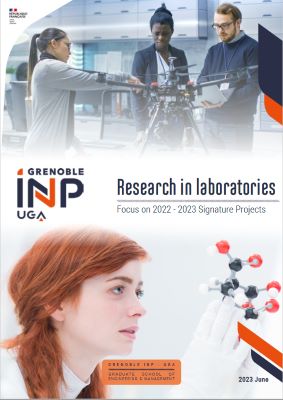
Article written by Isabelle Chéry and Gaëlle Calvary
Pre-maturation is the real link between intellectual creation and valorisation: it is the preliminary phase of the development process of an innovative result, i.e., one that is new in relation to the state of the art in science and technology. As its name indicates, pre-maturation is the phase that precedes maturation. Its objective is to work on innovative research results to bring them to a level of maturity that will allow them to enter the maturation process.
Classically, a result level of maturity is indexed on the TRL scale. This common reference system makes it possible to determine the risk of obtaining a technology that can be transferred to the socio-economic and cultural environment. The lower the TRL, the higher the risk of obtaining a marketable technology. The benchmark ranges from 1 to 9. Pre-maturation starts at TRL 1-2 and aims to reach TRL 3-4. TRL 1 corresponds to the achievement of “paper” results that suggest a potential for applied research and make it possible to envisage the major application fields. TRL 2 corresponds to the establishment of experimental concepts for the results that allow hypotheses to be formulated for their applications. TRL 3 corresponds to obtaining an experimental proof of concept: the possible applications are refined without having been explored in greater depth. TRL 4 corresponds to the validation in a laboratory environment of elementary building blocks and/or basic subsystems. Thus, pre-maturation allows the development of an experimental proof of concept of innovative results, without necessarily demonstrating their applicability to concrete applications at this stage.
The results pre-maturation and protection can be carried out beforehand, in parallel or in sequence, depending on whether additional experiments are necessary for the drafting of patent applications or whether the applications are not yet defined. Indeed, in order to file a patent application, for example, it is necessary for the application to be illustrated with concrete examples of reproducible implementation of the invention that are likely to have an industrial application. In France, if the patent is not sufficiently described in terms of how the invention is to be carried out, it can be granted but a third party can bring an action for annulment before a judge for insufficient description. In the USA, the description must relate to the inventor’s preferred embodiment (“the best mode”) or the application will be cancelled.
Thus, the pre-maturity phase may include pre-studies on the intellectual property and technical-economic aspects. In particular, the intellectual property aspect must be studied through prior art searches in order to position the innovative result and verify the absence of existing equivalent patents as well as the freedom of future exploitation. It is also necessary to ensure that the intellectual creation can be put into practice at reasonable cost: validate the feasibility of manufacturing, ensure that there are no major technical difficulties in putting the result into practice and consider the cost of the innovation so that it is not prohibitive in relation to the product envisaged.



